Key takeaways:
- Emergency response drills enhance preparedness by creating muscle memory and fostering teamwork among healthcare professionals during crises.
- Healthcare education is essential for building confidence and a culture of safety, enabling effective responses to emergencies.
- Incorporating realistic scenarios and debriefing sessions strengthens team dynamics and reveals areas for improvement in emergency response training.
- Leveraging technology, such as virtual reality, can enhance engagement and realism in training, ensuring better preparedness for real-world challenges.
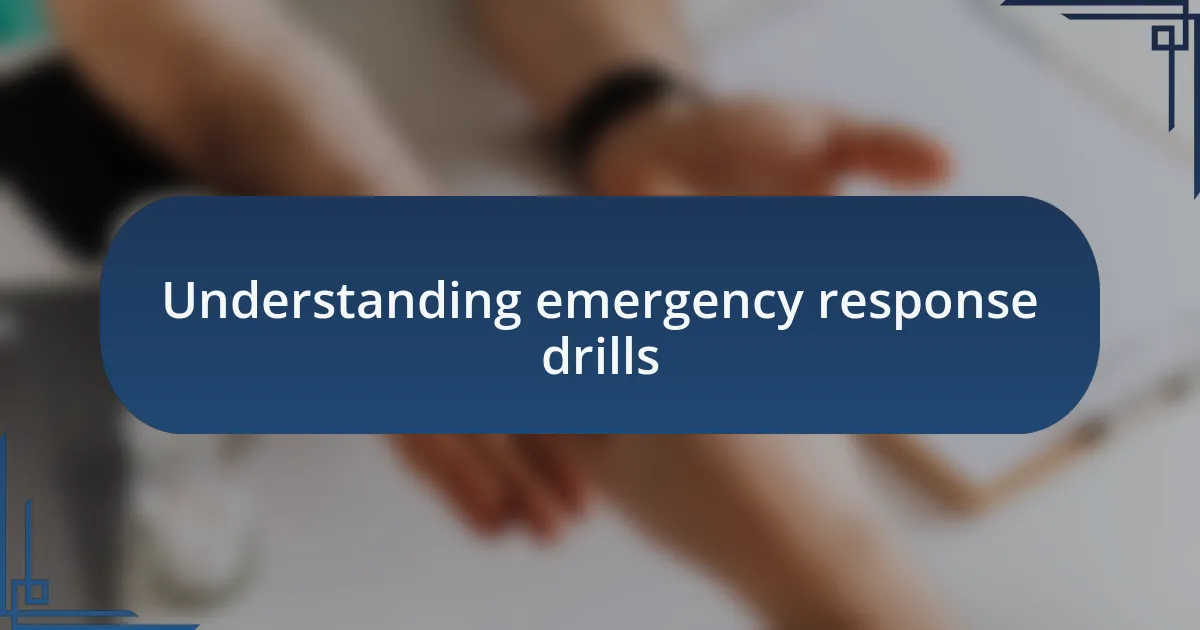
Understanding emergency response drills
Emergency response drills are critical simulations designed to prepare healthcare professionals for real-life crises. They help create muscle memory so that when a true emergency strikes, individuals can respond swiftly and efficiently without the paralyzing effects of panic. I recall the first time I participated in a drill; the tension in the room was palpable, yet there was also a sense of camaraderie as we all worked together to navigate the simulated chaos.
These drills often mirror various emergency scenarios, such as natural disasters, patient evacuations, or mass casualty incidents. I remember vividly a drill that simulated a chemical spill – the urgency to follow protocols was both thrilling and nerve-wracking. If everyone understands their role and the procedures to follow, how much more effective can our response be during a real crisis? This collective preparation not only builds confidence but also reinforces the importance of teamwork in high-stress situations.
Moreover, the value of these drills extends beyond just practicing procedures; they also highlight areas for improvement. It’s not uncommon to discover gaps in communication or roles that need further clarity. Reflecting on past drills, I’ve learned that discomfort can often lead to growth, prompting us to ask: what can we change today to ensure we’re more prepared tomorrow? Embracing this continuous improvement mindset is essential in a field where every second counts.

Importance of healthcare education
Healthcare education is fundamental in equipping professionals with the knowledge and skills necessary to handle emergencies effectively. I’ve often felt that when a team is well-trained, the anxiety of an emergency becomes manageable, turning into a shared responsibility rather than a burden. Can you remember a time when preparation transformed a daunting situation into a team effort?
Understanding the intricacies of emergency protocols boosts confidence among staff. I recall a particularly intense training session where we tackled a hypothetical mass casualty incident. The tension was real, but as we practiced together, I felt empowered. It struck me then that knowledge is not just power; it’s the lifeline we extend to our patients in crisis.
Moreover, healthcare education cultivates a culture of safety and vigilance. I remember an instance when a colleague spotted a critical oversight during a drill; that moment reinforced how one trained eye can potentially save lives. Isn’t it fascinating how each learning experience builds the foundation for a safer healthcare environment? We owe it to ourselves and our patients to foster this continuous educational journey.
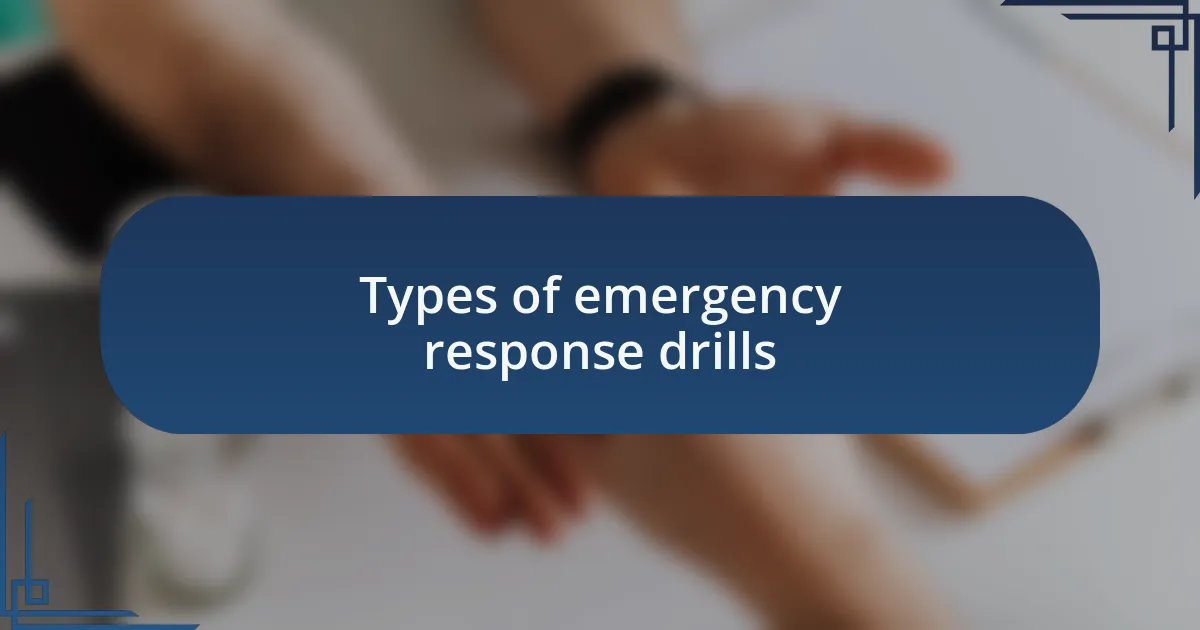
Types of emergency response drills
Emergency response drills come in various formats, each tailored to specific scenarios. I’ve participated in tabletop exercises where we gathered around a table to discuss our response to hypothetical emergencies. It was intriguing to see how brainstorming ideas under pressure not only sparked creative solutions but also highlighted gaps in our planning—gaps we’d likely miss in a conventional setting.
Live drills, on the other hand, provide an immersive experience. I recall the adrenaline rush during a fire evacuation drill. With alarms blaring and the urgency of the situation, I felt a mix of panic and determination. It was a reminder of how critical it is to practice our responses in real-time; the actions we rehearsed became instinctual, preparing us for actual emergencies. Have you ever felt that moment when practice becomes second nature?
Additionally, simulation-based drills offer a unique opportunity for realism. One time, we used virtual reality to simulate a severe flu outbreak in the emergency department. The realism was so striking that I felt deeply invested in finding solutions as though it were an actual crisis. This innovative approach not only improved our clinical skills but also reinforced team dynamics—an essential aspect of our response to real-life emergencies.

Key components of effective drills
Effective drills hinge on realistic scenarios that reflect potential emergencies. During one drill, we simulated a mass casualty incident. As we navigated through triage protocols, I felt a palpable tension in the air. This underlined how crucial it is for the team to be well-versed in the procedures we’d follow when the stakes were high—what better way to prepare for chaos than to practice in chaotic settings?
Another significant component is debriefing after the drill. I remember a particular session where we sat down to discuss what worked and what didn’t. We uncovered insights that I hadn’t considered during the drill. Engaging in open dialogue about our strengths and weaknesses moved us toward continuous improvement. Isn’t it fascinating how candid feedback can elevate our response capabilities?
Lastly, incorporating inter-professional collaboration during drills strengthens teamwork. I once participated in a simulation with paramedics, nurses, and doctors working side by side. The synergy we created in that moment shifted my perspective on collective impact. Have you thought about how diverse professional backgrounds enrich our responses? The unity that comes from shared experiences is invaluable in emergency situations.
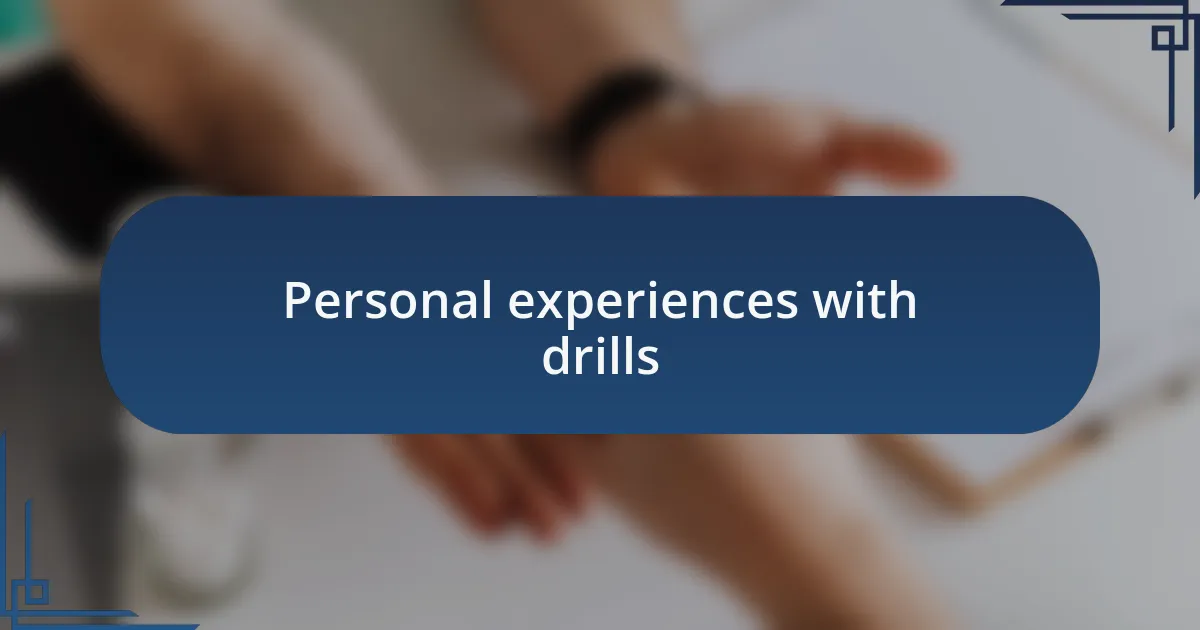
Personal experiences with drills
I vividly recall my first emergency response drill—it was both exhilarating and nerve-wracking. As we simulated a fire evacuation in our facility, the alarms blared and I could feel my heart racing. In that moment, I realized how vital it was to keep calm and focused; my instincts kicked in, guiding me to assist those who were disoriented. How often do we truly appreciate the clarity of thought that emerges in such high-pressure moments?
Another drill that stands out took place in a simulated natural disaster scenario. While executing our evacuation plan, I found myself pairing up with a colleague I’d never worked with before. The unexpected camaraderie not only made the experience less daunting but also highlighted how essential trust is in real emergencies. Have you ever been surprised by the connections you make in stressful situations? For me, it was a profound reminder that we can rely on one another when the stakes are high.
Reflecting on our drills, I often think about the emotional weight they carry. Participating in simulation exercises has sometimes left me feeling drained but also invigorated with purpose. When I see everyone come together, determined to better their skills, it reinforces my belief in the importance of preparedness. Isn’t it interesting how these drills can transform our anxiety into shared responsibility and commitment?
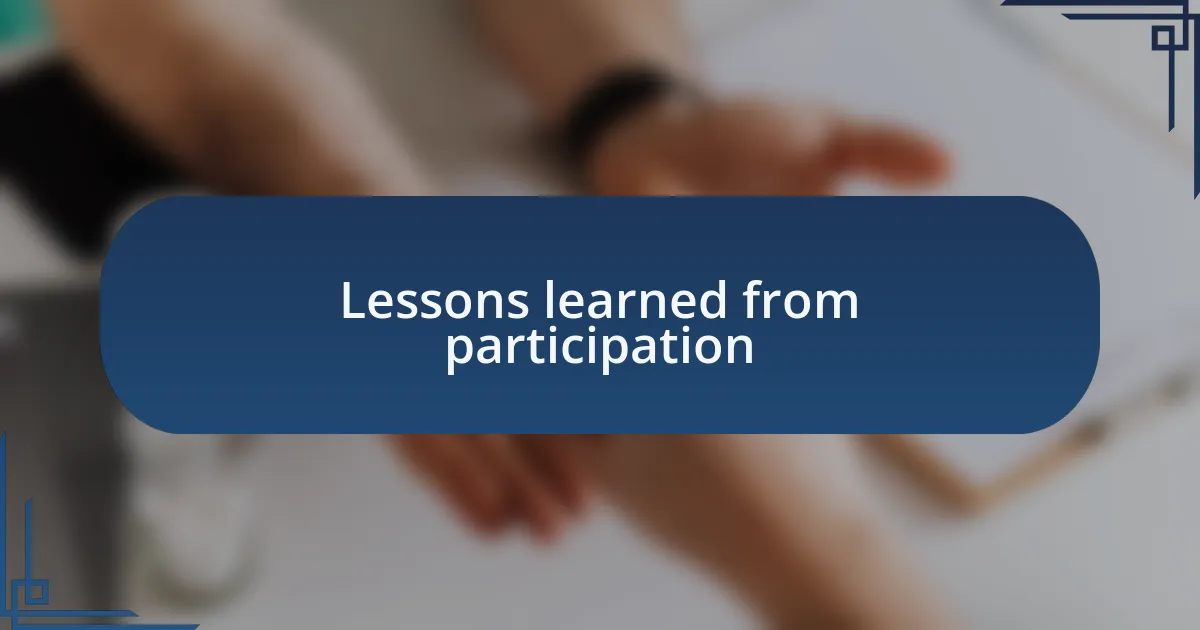
Lessons learned from participation
During one particular drill, I found myself in a role I had never expected to take on: leading a small team. The pressure was intense, yet I discovered an unexpected clarity in my ability to communicate effectively under stress. This taught me that true leadership emerges not from titles but instead from action and guidance—how often do we overlook our potential until put to the test?
Another lesson that resonated deeply with me was the importance of adaptability. In one exercise, the scenario changed midway through, throwing our plans into disarray. I remember feeling a sense of panic at first, but then I realized that flexibility is a crucial asset in emergencies. Have you ever noticed how quickly we can recalibrate when the stakes are high? It’s a powerful reminder that being able to pivot can make all the difference when lives are on the line.
Reflecting on the emotional aspects of these drills, I often feel a mix of anxiety and empowerment. Whenever we debrief after a drill, sharing our thoughts and feelings, it underscores the collective journey toward preparedness. Those honest conversations allow for vulnerability, creating an environment where everyone learns and grows together. Isn’t it fascinating how discussing our fears can lead to a stronger, more resilient team?
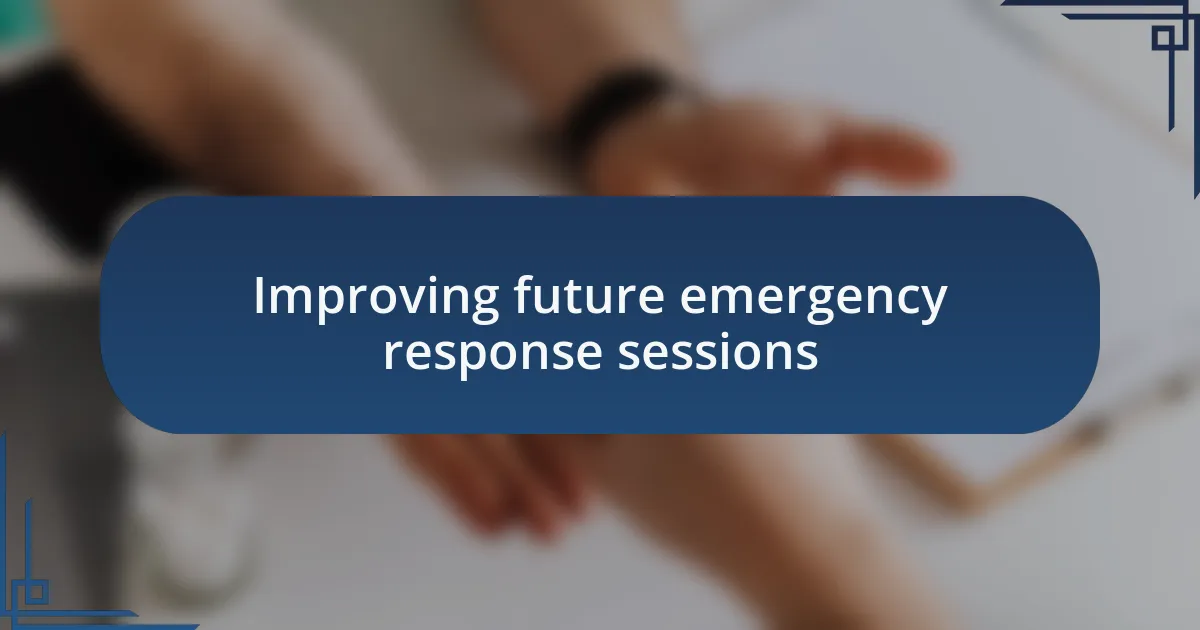
Improving future emergency response sessions
Improving future emergency response sessions starts with incorporating more realistic and varied scenarios. I remember a drill where we only focused on floods, despite living in an area prone to wildfires. This narrow focus felt limiting, making me realize that broadening our training to include different disaster types could enhance our preparedness. Why shouldn’t we encourage teams to experience a wider array of emergencies?
Another key aspect is enhancing participant feedback loops. In one session, we discussed our experiences only superficially, which didn’t fully tap into the wealth of insights the team had. After putting in the effort, aren’t we all eager to share what worked and what didn’t? Establishing regular opportunities for meaningful discussion can cultivate a culture of continuous improvement, ensuring that every voice is heard and valued.
Lastly, I believe that technology should play a more prominent role in these sessions. I remember when we used virtual reality to simulate a high-stakes scenario – it was enlightening! By immersing ourselves in cutting-edge tools, we not only make the training more engaging but also prepare ourselves better for real-world challenges. Shouldn’t we harness every resource available to us in the name of safety? It’s crucial for emergency response training to evolve with these advances.